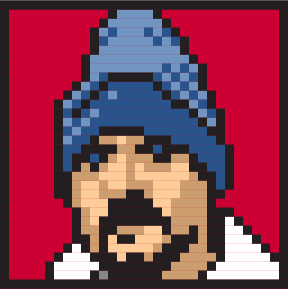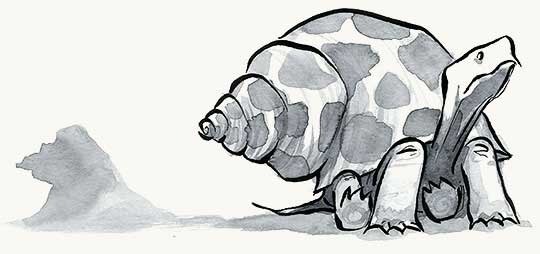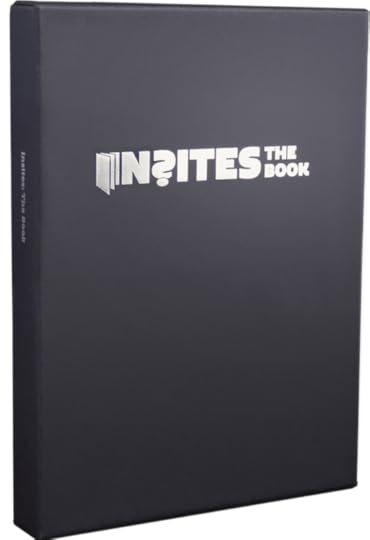Jeffrey Zeldman's Blog, page 49
October 31, 2012
Après le déluge

TODAY MY DAUGHTER and I brushed our teeth with real, running water. It was heaven.
Hurricane Sandy killed people and destroyed homes in New York and New Jersey. As a sideline, it left everyone in Manhattan below 39th Street without electric power. That means no elevator service in high-rise apartment buildings. No modem, no Wi-Fi, no charge for mobile devices—and almost no cellular access from AT&T or Verizon. There are no lights, there is no heat, and—if you live above the sixth floor in an apartment building (as we do)—there is no running water.
Which means no showers, no baths, no coffee, and no flushing toilets.
Con Edison says it will be days before power is restored. I think they’re being optimistic. Cleaning up after a disaster of this magnitude is a job for heroes. Repairing the power grid for five water-damaged boroughs of New York is a task for wizards.
So here is the little miracle:
There is a block on Madison Avenue below 39th Street that has power. My studio is located on that block. Electric power and internet access are working at the studio. My daughter, her mother and I have trudged here and temporarily set up camp. We brushed our teeth. We made espresso. We responded to days-old messages (messages our overtaxed cellular services could not deliver). My daughter camped out on her mother’s jacket and watched PBS Kids on an iPad.
The bliss of normality, if only for a few hours. Gratitude for the things we take for granted. Fresh clean water for a child’s toothbrush. The internet. The ability to contact friends.
October 23, 2012
My Brother is a Monster
MY MOTHER played piano and cello. My father draws, paints, and sculpts; plays trumpet and guitar; and led an advanced R&D lab in the 1970s, developing robotics and rocket parts. You know what I do, but I also play keyboards and other instruments, studied music theory, and composed and produced music in my own studio before failing up into my present career. We Zeldmans go our own way, bring our own juice, and leave a trail of tears and gold. But my brother Pete Zeldman is the real talent in the family.
My brother Pete spontaneously composes and performs music of such rhythmic complexity that Edgard Varèse and Frank Zappa would be proud. Even with an advanced music degree, you’d have a tough time following the music analytically. But you don’t have to, because it grooves. That’s the crazy surprise of it. My brother plays 17 in the time of 16 in the time of 15 in the time of 14, with cross rhythms in simultaneous 3/4 and 7/8, and you could dance to it. Admittedly, you couldn’t pogo, but it doesn’t pretend to be punk. Musically it is probably the exact opposite of punk, but spiritually it is punk because it is pure affirmation.
My brother made two CDs before releasing his new video, Enigma, this week. I listen to these CDs a lot. Although I’ve watched my brother develop his unique rhythmic musical theories over the past 20 years, I don’t attempt to “follow” the music in any analytical fashion while listening. I just let it wash over me. So can you.
New art is rarely understood. New music is rarely what the people want. They threw tomatoes at Debussy and Stravinsky, and now their compositions are gentle backgrounds for dentist’s offices. White people laughed at rock and roll and their children danced to it. Those rockers laughed at hip hop and their kids dance to it. My brother’s music is like that. It is something new. It’s not going to be a movement because it takes a certain kind of twisted genius to conceive of and play it. But you might like it. And if you’re a drummer, you probably need to hear it.
I am proud of my brother and delighted to share his genius with you. Samples from his new video are available at pete-zeldman.com. His CDs are also available.
October 16, 2012
Greetings from London

HELLO FROM LONDON, where I’m visiting family and friends, speaking at Future of Web Apps, and exploring this magical city.
Pete Zeldman
London – a list on Foursquare (in progress)
London October 2012 – photo set on Flickr (in progress)
#fowa on Twitter
#fowa on Instagram
Future of Web Apps – London
October 10, 2012
That Brooklyn Thing

THE YEAR Brooklyn Beta opened, a misunderstanding and a coincidentally timed paying gig prevented me from attending. The following year, two paying gigs, scheduled back to back, kept me away. This year was going to be different. This year I cleared my decks. This year there were no gigs, no client meetings, no major medical procedures scheduled for the three days that the internet descends on Brooklyn. This year I was definitely attending.
Then this family thing came up and I can’t go. Nobody’s sick, nobody’s injured, nobody’s mentally or emotionally or spiritually treading water, but my presence and attention are required in Manhattan for huge swathes of the day. Which means, although friends I adore and see too rarely are a mere five subway stops away, I cannot be with them now.
I hope Brooklyn Beta continues for a thousand years, and I hope I can attend for at least one of them. I hope this isn’t a thing—like it was a thing for years that when Apple updated its Macintosh operating system, I was certain to be one of the 0.001% of users who suffered from some strange edge-case problem as a direct consequence. I hope there isn’t a betting pool on the odds of my attending Brooklyn Beta, although I have visions of one bespectacled design nerd slipping another a fiver on their receiving news of my non-attendance. Most of all, I hope everyone attending has a great time. See you next year, maybe.
October 9, 2012
Will the last digital canvas please turn out the lights?

DESIGNERS. WE LOVE CANVASES. It’s what we know. Even the cave wall had predictable, fixed dimensions. On the web, in the past few years, we’ve finally had to acknowledge that the canvas is not fixed, that each user’s canvas is different, and that fixed-width design—while safe and comfortable because it’s what we know—really doesn’t make sense in the world of HTML, and probably never did. We’ve spent the past two or three years rapidly learning (and sharing) new ways of designing.
But while we were unwrapping ourselves from the notion of a fixed canvas on the web, many of us were gleefully tucking into a fixed canvas in Apple’s world of the iPhone and iPad. True, the iPad had more pixels than the original iPhone—an advantage also enjoyed by later iPhone models with their Retina displays. But they shared easily interchanged aspect ratios (4:3 for the iPad and 3:2 for the iphone), enabling designers to design right to the canvas.
Apple’s fixed canvas wasn’t just a designer’s security blanket. It enabled us to craft a certain kind of polished experience right to the device. We laughed (or cried) at the Android with its 500 “standard” breakpoints and counting. Apple had given us a fixed-width sandbox and we built castles in it.
Well, goodbye to all that.
The end of fixed aspect ratios
With the iPhone 5′s switch to a 16:9 aspect ratio, and given the unknown aspect ratio of the upcoming iPad mini, “we’re going to see a big change in a certain type of iOS app—the one designed for the device,” Craig Grannell predicts in today’s reverttosaved.com:
[Veteran developer John] Pickford summed it up by stating his approach would no longer depend heavily on screen shape, and I’ve heard similar from other developers, both of apps and games although especially the latter. In a sense, this could be a good thing—freeing up iOS from the constraints of specific screen shapes opens up developers to whatever Apple throws at them next and should also make apps simpler to port to competing platforms. But it also impacts heavily on those tightly crafted experiences that were designed just for your iPad or just for your iPhone. Having all the action take place only in the very centre of a screen, because a developer cannot guarantee what device you’re using, or, worse, carving out a viewport and surrounding it with a border, could cheapen iOS games and apps in a big way.
Perhaps I’m being pessimistic, but pre-iPhone 5, indies were already feeling the pinch. With that device and perhaps a new, smaller iPad to contend with, the shift towards more fluid and less device-specific apps seems inevitable.—Craig Grannell, iOS screen fragmentation points to a shift in app development
I share Craig’s assessment of what the change in aspect ratios portends for application design. But I believe that designers will rise to the challenge, as we have on the web; and that bright app designers will find ways to design experiences which, even if they are actually flexible behind the scenes, still feel like they were custom crafted for the device in your hand.
October 4, 2012
Communication Breakdown
REDUNDANT MECHANISMS that fail to communicate with one another can make using Mac OS X Lion more confusing than it should be.
Consider the screenshot shown here. While Apple’s Software Update knows that I have downloaded the latest version of iPhoto (“Your software is up to date”), Apple’s App Store, pulling from a different database, does not know that I have already installed iPhoto. It only knows that a new version is available.
Because the App Store’s left hand doesn’t know what Software Update’s right hand has already downloaded and installed, the App Store flashes a red download alert badge, urging me to download 500MB of Apple software that Apple’s OS has already installed on my Apple machine.
Suppose I don’t bother to check Software Update and verify that the App Store’s “Update” tab is urging me to take a nonsensical action. Suppose I actually go ahead and click “UPDATE” in the App Store’s “Update” tab. What will happen?
The software, all 500 MB of it, will download again, and install itself again. That’s what will happen.
And the cream of the jest? After installing the software again, if I click into the “Purchases” tab of the App Store, the “Purchases” tab will inform me that an iPhoto update is available, and urge me to install it. And if I have been huffing nitrous all day and take Apple’s advice, the 500 MB package will download for a third time and install itself a third time.
And you thought Retina images were tough on bandwidth.
(A friend tells me that Mountain Lion resolves this clustercuss by removing Software Update from the equation. I suspect that those of us still using Lion are receiving unintended anal leakage from UI decisions that make sense in Mountain Lion but are idiotic in Lion. #imisssteve)
September 25, 2012
In Search of a Genuine Web Aesthetic & Designing For High Density Displays
IN A VERY special issue of A List Apart for people who make websites, Paul Robert Lloyd asks us to put the “design” back in “responsive design” and seek out a genuine web aesthetic. And Dave Rupert shares ways to be thoughtful, not knee-jerk, about high-pixel-density displays, in Mo’ Pixels Mo’ Problems.
Illustration by Kevin Cornell for A List Apart
September 21, 2012
PBS Off Book video: The Art of Web Design
Whitney Hess, Jason Santa Maria, and I discuss the past two decades of design history, framing the web’s emergence and explaining the transition from a print-based world to a digital one.
September 19, 2012
To Lisbon!
I’M OFF to Lisbon, Portugal, for Refresh LX, “an affordable conference for busy web designers.” See you soon!
Insites: The Book Honors Web Design, Designers
“INSITES: THE BOOK is a beautiful, limited edition, 256-page book presented in a numbered, foil-blocked presentation box. This very special publication features no code snippets and no design tips; instead, 20 deeply personal conversations with the biggest names in the web community.
“Over the course of six months, we travelled the US and the UK to meet with Tina Roth Eisenberg, Jason Santa Maria, Cameron Moll, Ethan Marcotte, Alex Hunter, Brendan Dawes, Simon Collison, Dan Rubin, Andy McGloughlin, Kevin Rose and Daniel Burka, Josh Brewer, Ron Richards, Trent Walton, Ian Coyle, Mandy Brown, Sarah Parmenter, Jim Coudal, Jeffrey Zeldman, Tim Van Damme, and Jon Hicks.
“We delved into their personal journeys, big wins, and lessons learned, along with the kind of tales you’ll never hear on a conference stage. Each and every person we spoke to has an amazing story to tell — a story we can all relate to, because even the biggest successes have the smallest, most humble of beginnings.” — Insites: The Book
I am honored to be among those interviewed in this beautiful publication.
Insites: The Book is published by Viewport Industries in association with MailChimp.







